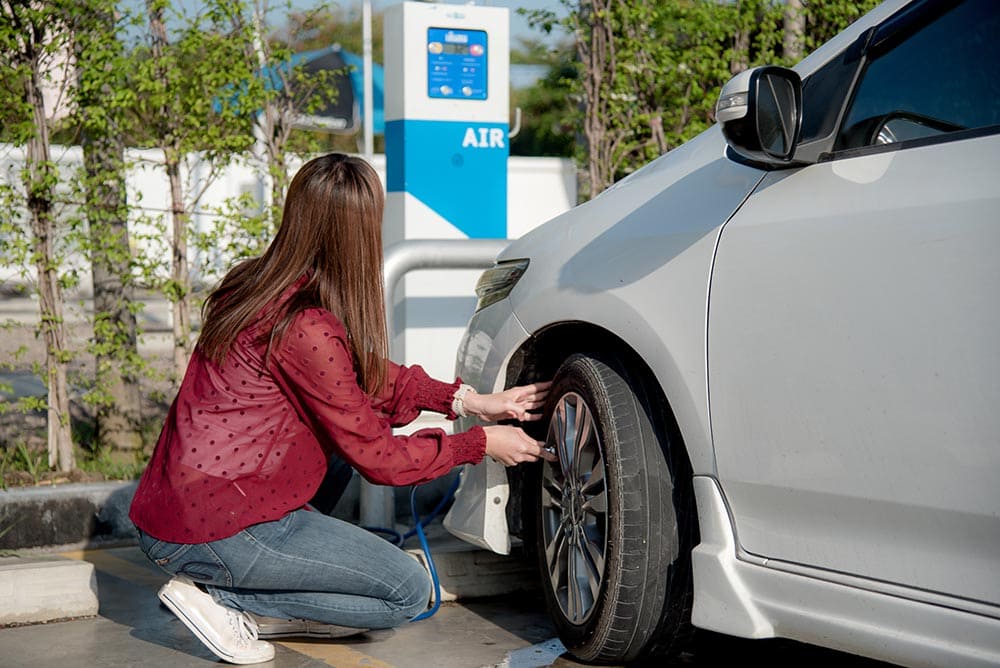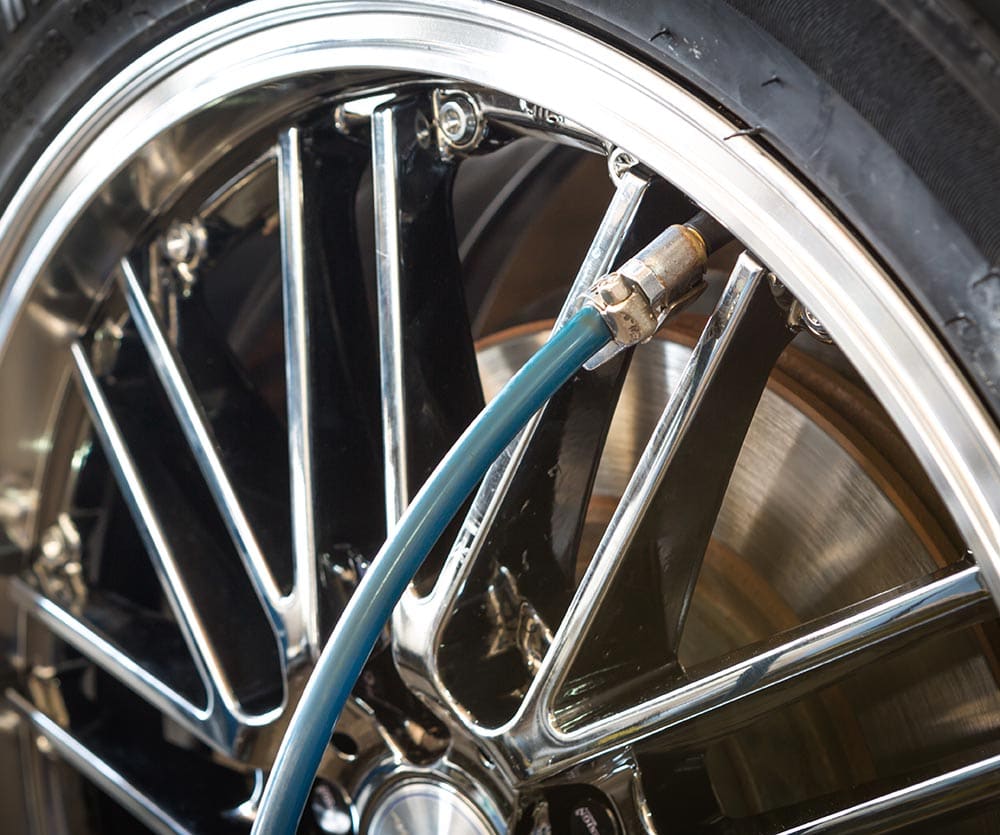Can You Put Air in Nitrogen Tires? Reasons, Facts & FAQs
-
Codee Chessher
- Last updated:

Most people fill their tires with air, but nitrogen has become popular in recent years for the benefits it confers. However, when a nitrogen-filled tire gets low and no nitrogen is available, is it okay to top it up with air? Yes, as it turns out!
Air is made up of 78% nitrogen, 21% oxygen, and 1% miscellaneous gasses. When you top a nitrogen-filled tire with air, you’re just diluting the nitrogen with some oxygen, which is perfectly safe. It might reduce the benefits you receive from the nitrogen-filled tire, but not by much.
Let’s check out some more information about what exactly nitrogen does in tires, how to tell if you can put nitrogen in your tires, and more relevant info.
Why Fill Tires With Nitrogen?
First, you need to understand how tires lose air in the first place. With air, you lose about 1.5 pounds per square inch (psi) in tire pressure per month. This happens because tires have microscopic pores that allow oxygen molecules to escape, albeit very slowly. When your tires’ pressure drops, it can lead to uneven tire tread wear, reduced fuel economy, and poor handling.

Who Uses Nitrogen-Filled Tires?
Nitrogen molecules are larger than oxygen, which means it takes them much longer to escape through a tire’s pores. Nitrogen-filled tires only lose about 0.5–1.0 psi per month. Most race cars use nitrogen in their tires because maintaining tire pressure is crucial to optimal performance.
The tires on airplanes also typically use nitrogen for that same reason. When air is used to fill tires, it injects a tiny amount of moisture into the tire, which can corrode the steel components of the tire. For airplanes, using nitrogen is a matter of safety as well as pragmatism.
Few drivers outside these industries use nitrogen, but it’s not unheard of. Drivers who want to maximize their fuel economy and cut down on tire replacements may opt to use nitrogen-filled tires. In theory, nitrogen offers a smoother ride because of its superior shock absorption over air. In practice, many drivers probably wouldn’t even notice the difference.
The main downside is that nitrogen is not widely available while most gas stations offer free or cheap air. Nitrogen refills may cost as much as $5 per tire, which is painful when you consider that air is usually free or cheap.
What Happens if You Put Air in a Nitrogen Tire?
Nothing, because nitrogen and oxygen mix together readily. If you find your nitrogen tires are getting low but you can’t find a nitrogen refill, topping up with air is perfectly fine. Using air to top up might reduce or nullify some of the benefits of using nitrogen in the first place, but it’s certainly better than driving with soft tires.
If you do decide to fill your nitrogen tires with air, you’ll need to have the tire purged later before you get it refilled with nitrogen. This might result in an extra service charge.

Can I Fill Up Any Tire With Nitrogen?
Yes, you can fill up any tire with nitrogen without ill effects. If you have brand-new tires, you might not know whether it uses nitrogen or not. To check, take a look at the tire’s valve cap. On tires filled with air, the cap will be chrome or black. For tires filled with nitrogen, it will be green or have a green “N2” on it.
Conclusion
Nitrogen enhances the stability and lifespan of tires while enhancing ride quality. When your nitrogen gets low and you can’t find a refill, it’s perfectly fine to fill up with air. You may have to purge it later, but it beats driving on a soft tire.
Featured Image Credit By: RecycleMan, Shutterstock
Contents

